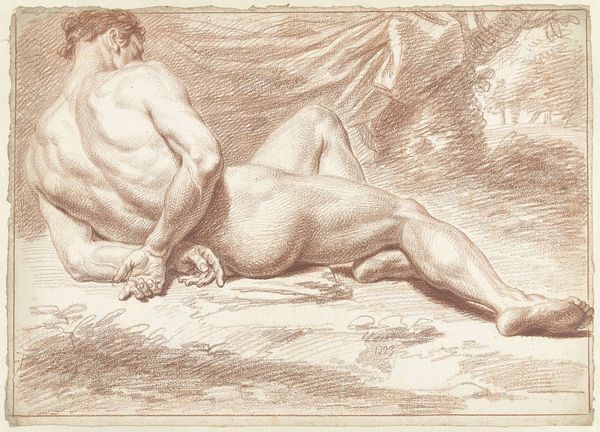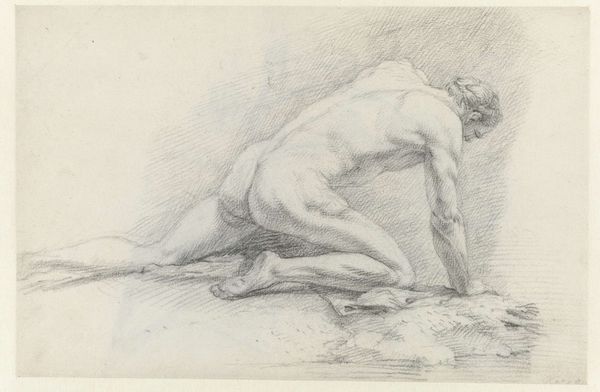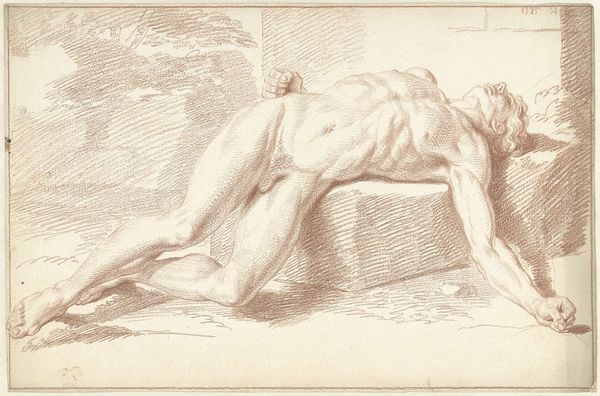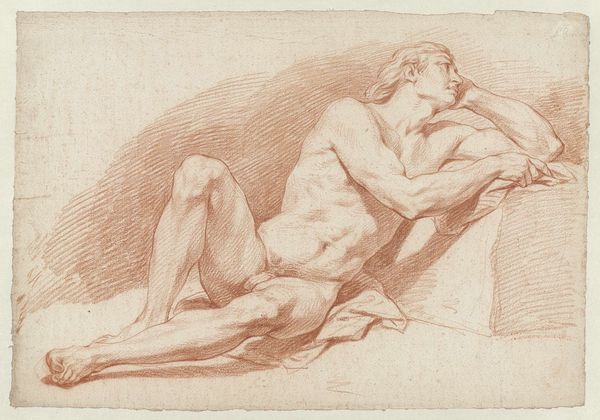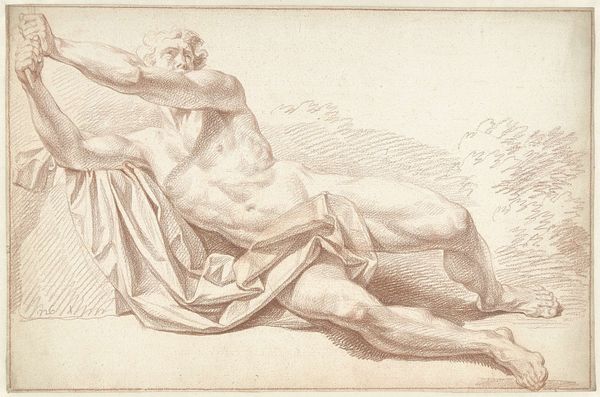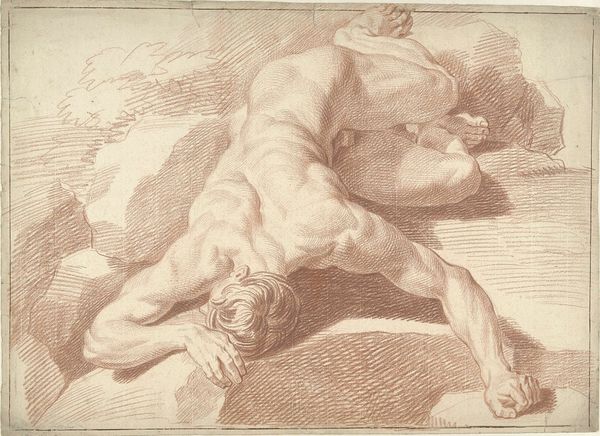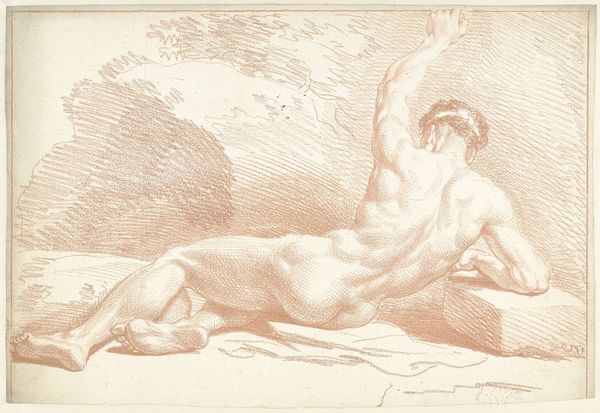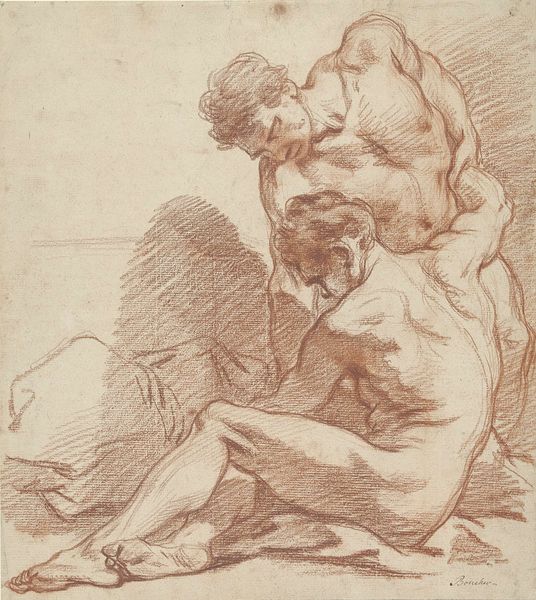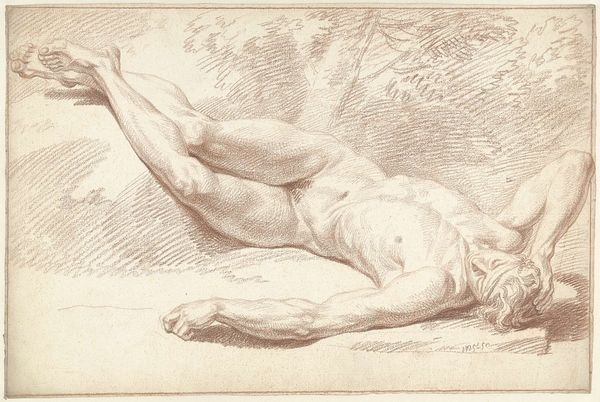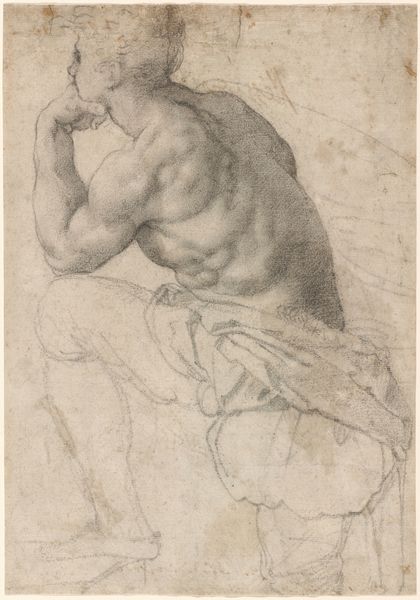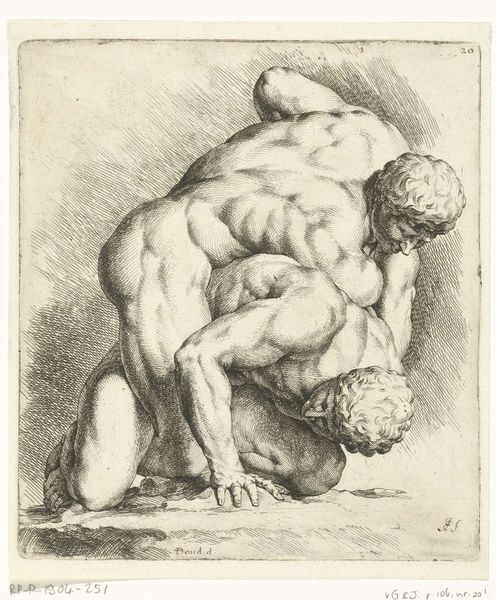
drawing, pencil
#
pencil drawn
#
drawing
#
charcoal drawing
#
figuration
#
pencil drawing
#
pencil
#
portrait drawing
#
history-painting
#
academic-art
#
nude
Dimensions: height 315 mm, width 472 mm
Copyright: Rijks Museum: Open Domain
Louis Fabritius Dubourg rendered this nude male kneeling figure in red chalk at an unknown date. This study of the male nude can tell us a lot about the artistic training and conventions in 18th century Europe. Academies of Art played a crucial role in shaping artistic standards. They promoted the study of classical sculpture and anatomy as the foundation for history painting, the most prestigious genre. Male nudes were a central part of this. Dubourg, who was French, likely made this drawing as part of his academic training. The precise, idealized rendering of the figure reflects the influence of classical sculpture and Renaissance masters. It emphasized anatomical accuracy and a sense of idealized beauty. We can see the figure's pose and musculature rendered with precision, suggesting careful study from life or casts. To understand this drawing more fully, we can study the archives of European art academies, anatomical treatises, and the writings of art theorists from the period. This reminds us that art's meaning is always linked to its social and institutional context.
Comments
No comments
Be the first to comment and join the conversation on the ultimate creative platform.
